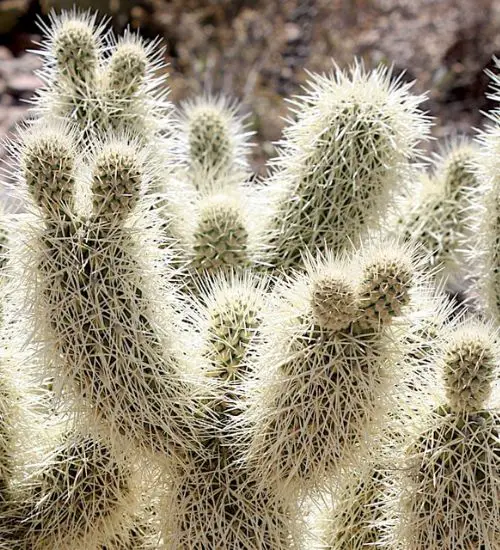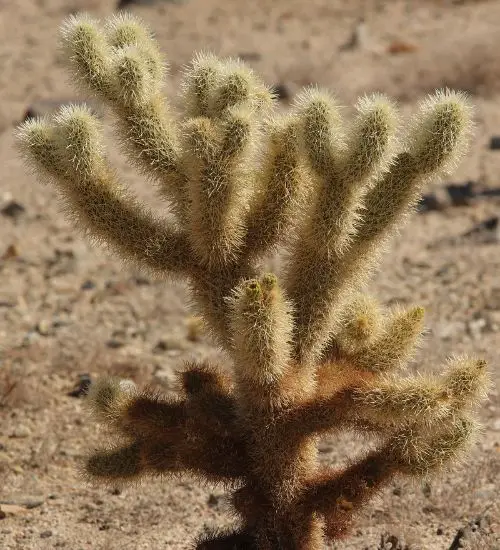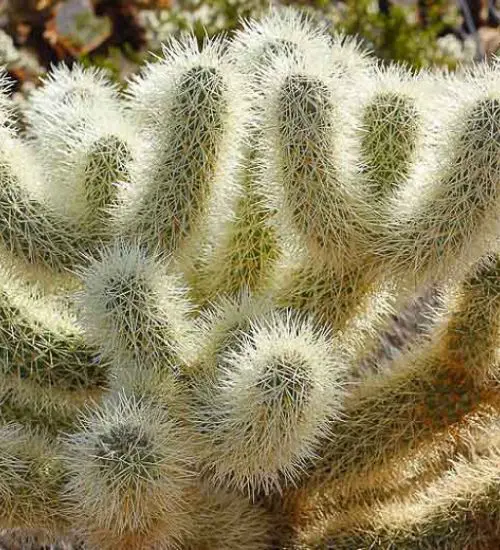Sun: full sun
Water: Below average watering needs for a succulent
Temperature: Zone 1a from -60° F to -55° F (-51.1 ° C to -48,3° C) to Zone 11b from 45° F to 50° F (7.2° C to 10° C)
Winter Survival: Cold hardy to 0°C
Propagation: stem cuttings
Flower: in the Spring or Summer
Flower Type: Yellow-Green
Toxic: Generally non-toxic to humans and animals
Dormant: winter
Space Requirement: Outdoors
Common Problems: Plants may rot if overwatered
Where to buy Opuntia bigelovii?
Basc Care for Opuntia bigelovii
Watering
Regular watering period should be every 2 weeks
Can you water your succulent more than what its need? The answer is yes and no. In extreme conditions, you can water your plants more often when you notice the soil is completely dry.
Fertilizing
Only feed this succulent during its active growing seasons which means winter. Use the right fertilizer applied in the right amounts. Applying half-strength balanced fertilizer every month or so is recommended for optimal results.
Do not fertilize during winter as the plant is dormant.
Sun & Location Requirements for " teddy bear or jumping teddy bear"
Opuntia bigelovii requires full sun for optimal growth and health. Place your succulent in a sunny spot in your garden or on a windowsill to ensure it's getting enough light. You'll know that the succulent is receiving enough sunlight if its leaves are bright green and firm.
As per this succulent profile, it is only able to stay healthy when the environment temperature is above the range of zone 1a from -60° F to -55° F (-51.1 ° C to -48,3° C).
Opuntia bigelovii is an incredibly resilient species that can survive temperatures as low as 0°F. It has a thick, waxy cuticle that helps protect it from frost damage, and its leaves are able to retain moisture in even the most arid environments. Its deep root system further helps it survive even the coldest winter conditions.
Any succulents in the group will need a large space to grow. You should place your pot outdoor. Since this plant needs a lot of space than other succulents, you should consider not planting them together with other succulents/plants.
Propagation
Propagating Opuntia bigelovii by stem cuttings is an easy and fun way to increase your collection of these unique houseplants. When propagating, it’s important to choose healthy stems from existing plants that are at least two inches long and have several leaves attached.
Toxicity

Opuntia bigelovii is generally non-toxic to humans and animals. However, the plant may contain certain toxins which can cause mild skin irritation if it is ingested or comes in contact with skin. Therefore, it is important to keep the plant away from children and pets for safety reasons.


